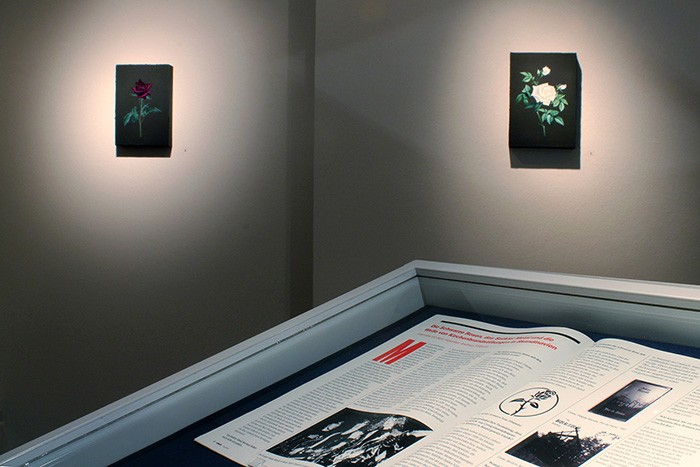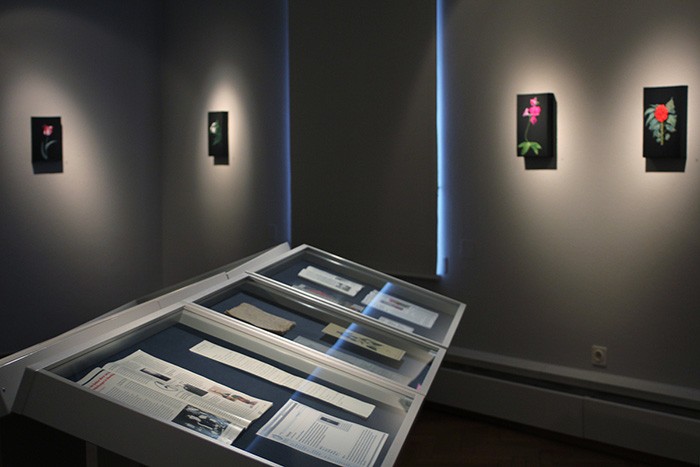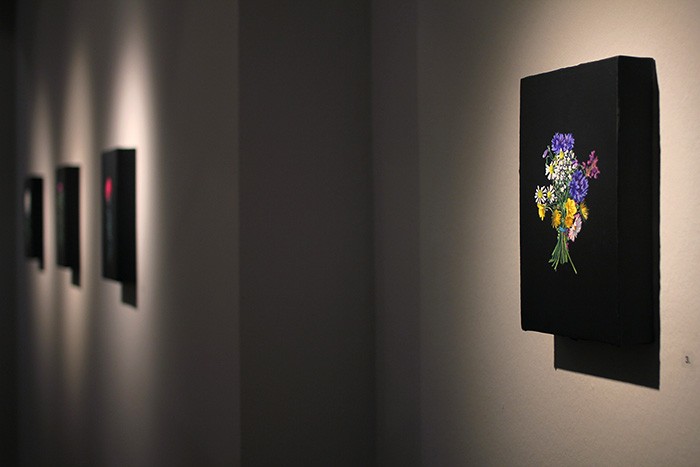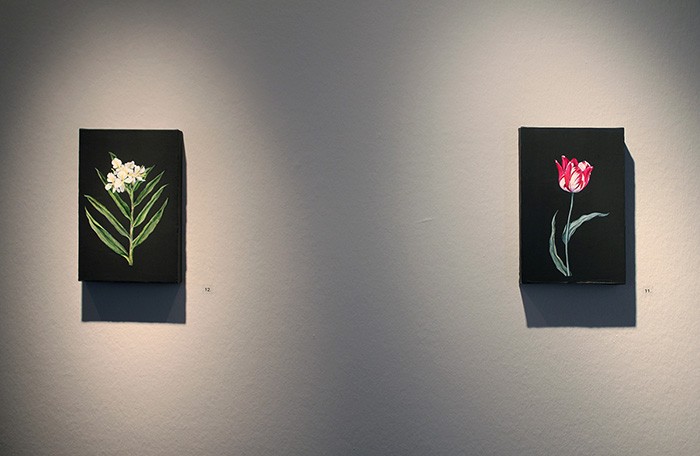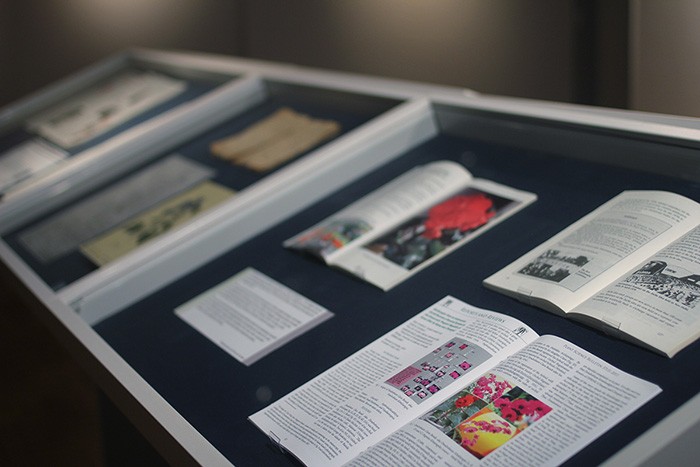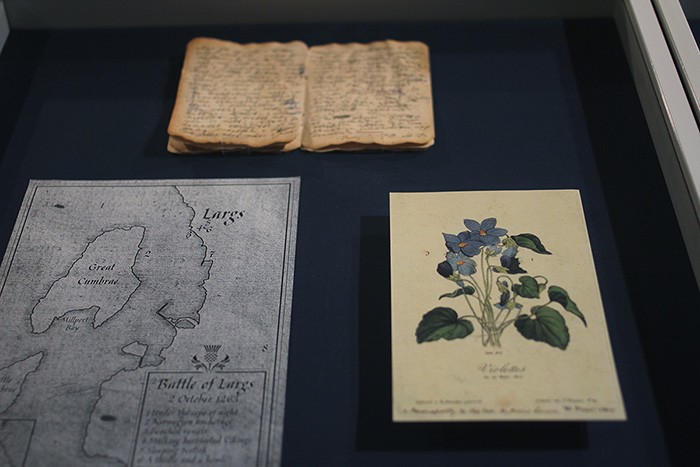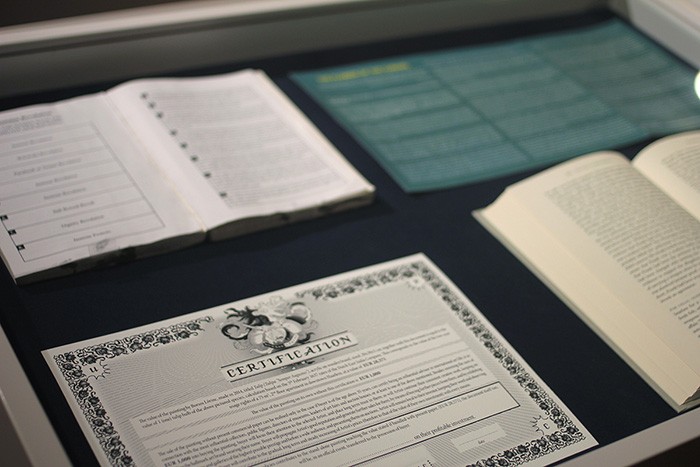16.05-03.08 | Solo exhibition | 14x14 Survey of the Danube Region | Edwin Scharff Museum, Neu-Ulm
Entering the exhibition of the critical artist duo, we are greeted by finely painted floral still lifes. “What is this?” we ask. And why does it surprise us at all? Perhaps thirteen meticulously painted floral still lifes seem a little anachronistic at a progressive contemporary art exhibition, don’t they? Or is this reaction logical in view of the current Hungarian political situation? Is there such thing as non-political art? Is there art that is not politicized? Twisting the expectations ingrained in all of us, the exhibition displays thirteen politicized flowers, loaded with various – historical, economic, artistic, etc. – layers of meaning, relating to which underlying layers of the artists’ doubts and self-scrutiny are revealed. In the language of flowers.
Compared to the duo’s previous works, which often critically approach current Hungarian political or broader social and art institutional issues, this exhibition with its beautiful floral still lifes is, in a sense, at the other extreme. Not incidentally, as the project’s point of departure was a series of paintings as far removed from current political issues as possible, based solely on aesthetic beauty. Lőrinc simply “wanted to paint beautiful flowers”, but felt she could not do it because of their previous artistic activity and the – supposed or actual – expectations of the art scene. Regardless of whether we consider this a realistic fear, an actual limitation or even self-censorship, the question arises: is the centuries-long tradition of floral still lifes really irreconcilable with progressive contemporary art or critical artistic attitudes?
From the start of the project, aspects of form and content have been strongly disconnected. While Lőrinc was painting, Borsos was conducting a research based on principles diverging from his prior practice, incorporating fictive and real elements, regarding the social, historical, political and economic layers of meaning underlying each flower. Thus, the artist duo remedied the “unquenchable” desire of painting beautiful floral stills and the internal blocks curbing their creation with a conceptual flower project. Therefore, the exhibition might as well be apprehended as a form of self-therapy in accordance with the principles of homeopathy: like cures like.
Many earlier works of the artists exhibit similar self-helping or therapeutic intentions. Such is, for instance, their long-term project ‘VIKOMAKT! (Let There Be a World Famous Hungarian Contemporary Artist!)’, which, depending on the point of view, can be interpreted as a benevolent, or naïve, or cynical self-fulfilling prophesy. Similar projects include ‘Pathetic Attempt at Influencing Politics that Influence Art’, a piece of multiple components, or ‘My Student Loan Debt in Forints’. In the latter case the gesture of self-help even brought success, as the price for which the painting depicting the sum of the artist’s student loan debt was sold was in fact enough to settle that debt. Their present project has similar features, especially in terms of its basic concept, but also in its details. For instance, the document accompanying the painting of a tulip is a sales contract which establishes the future market success of the painting as well as the success of the artist as a ‘brand’. Under the pretext of a famous 17th century economic bubble (the sudden and unrealistic boom of a specific tulip’s price), the contract is the critique of the speculative art market, the so-called contemporary art bubble or art flipping.
The artists make no distinction between the different documents connected to the paintings; real, authenticated historical documents are featured at the exhibition as equally important and authentic as the fictional newspaper articles, blog posts or pseudo-scientific documents based on Wikipedia articles and botanical studies. In some respects, the exhibited flower paintings are buried beneath all the complementary information, political interests, revolutions, historical associations and economic aspects linked to them, as well as the doubts and motivations of the artists, the supposed or actual expectations of the art world. By completely blending the real and fictive, objective and subjective elements, Lőrinc Borsos – already a fictive identity – leaves it to the spectator how they deal with the layers superposed over the flowers. As the artists write in their piece ‘Manifesto on Goodness and Shit 1.0’: "No artist is independent of political and religious affiliation, gender identity and descent, or devoid of personal interests.” Borsos Lőrinc cannot imagine such art that is independent of its social and political context, as they also cannot imagine such art-reception. And this certainly requires continuous decisions from the artist and the viewer too. This exhibition discusses these political and aesthetic decisions and inevitable commitments. And of course, still exclusively in the language of flowers.
Borbála Szalai, curator of the exhibition
Curator of exhibition "14x14 Survey of the Danube Region": Regina Hellwig-Schmid
Translation: Gergely Erdélyi, András Heltai, Frank Fischer, Dániel Sipos, Sarah Hillmann, Gabriele Welke
Special thanks to: .page., Zoltán Pallag
Photos by Borbála Szalai

